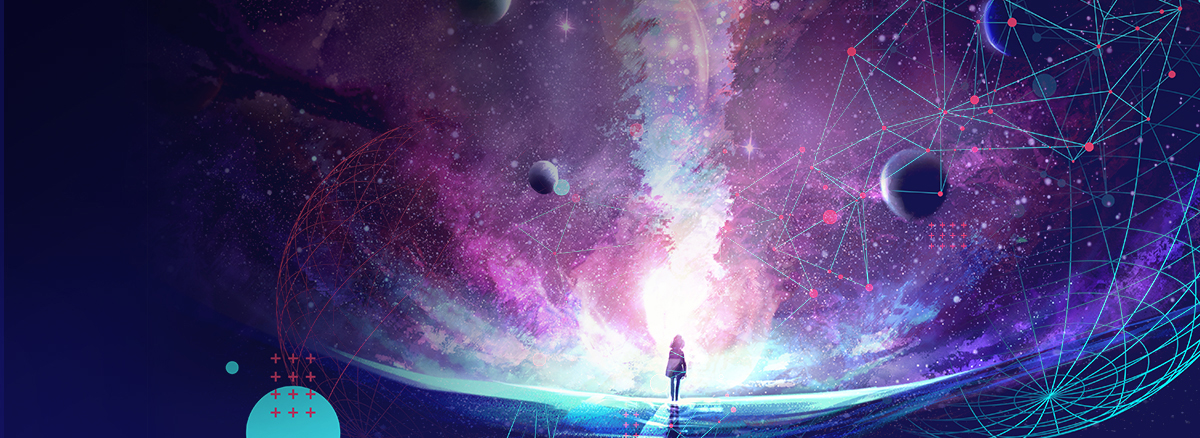
Digital Transformation Accelerates Space Missions
The development of better solutions and faster delivery of capabilities to space stakeholders hinge on a collaborative, innovation ecosystem-based approach
 11-14-2023
11-14-2023
 David Ray
David Ray
 SPACE
SPACE
Key Takeaways:
- Space capability producers' access to and use of commercial technologies is imperative for space mission stakeholders and their accelerated success.
- We as a space innovation community must break down silos and collaborate relentlessly to ensure that technologies and capabilities are where we want them to be.
- We must integrate in such a way that partners, customers and all stakeholders are working from a single source of truth – a digital thread.
LISTEN TO THIS BLOG:
Space is big, and that expanse conjures images of isolation and solitude. Ironically, success in space demands collaboration and integration. To prosper in the space domain, especially as part of all-domain operations, organizations must meld capabilities and innovation across all components and emerging technologies. To do that well demands a lot of disparate things working together through digital transformation.
As I meet with government decision-makers, we all agree that access to and use of commercial technologies is imperative for our agencies and organizations, as they rethink their traditional approaches, reevaluate their methodologies and begin adopting emerging technologies to stay ahead of change, retain and recruit the best talent and remain competitive.
Collaboration fuels a broad and innovative community
Together is better. Shifting to this mindset and collaborating across technology and organizational domains creates a seamless and connected innovation ecosystem to improve our interaction and data sharing. High-quality collaboration paired with a strong focus on modernizing our infrastructures and tools to improve our delivery of capabilities helps attain speedy and successful space and all-domain mission outcomes. Think combined joint all-domain command and control (CJADC2), multi-nation space exploration, multi-agency missile defense and even commercial endeavors.
At SAIC, our systems integrators bring communities together to deliver capabilities and customer-centered values and outcomes. We believe in promoting experimentation while we develop and refine our capabilities through integration with teammates and innovators in the community, from academia, startups, startup accelerators (e.g., Techstars Starburst) and others. Our integration approach lowers the barrier to onboard technologies, innovations and investments from both large traditional and small untraditional companies in a way that focuses on the customer mission.
In creating this broader context of how we do business, we leverage academia and government relationships and expertise, and we infuse startup-community best practices into the production and delivery of our capabilities. In the past year, we have signed several memorandums of understanding with commercial space entities to accelerate customer space objectives.
It’s about thinking outside of our SAIC toolbox and supporting and investing in these communities that are behaving in the ways we want to replicate in order to establish and expand this ecosystem model.
This collaboration is very important in creating and maintaining a culture of relentless innovation. Learning to effectively use emerging technologies and make them relevant to the work we are doing is very important in accelerating our capabilities to support our customers.
Integration creates novel digital transformation capabilities
The desired outcome is to integrate in such a way that partners, customers and all stakeholders are working from a single source of truth – a digital thread. We are currently working on accelerating our space capabilities, including artificial intelligence/machine learning, big data and cloud, automation and 5G and Internet of Things (IoT) for smart space stations and constellations. These technologies are driving digital transformation, and we have been researching and prototyping solutions to realize the promise of innovation not only on the ground but also in space, through our satellites and space stations, to improve service delivery.
DevSecOps underpins these technologies, by integrating methodologies to make our work more fluid and productive and in delivery of these digital services.
DevSecOps (and eventually AISecOps -- artificial intelligence applied to DevSecOps) is fundamentally the culture/process/methodology/technology that we need to adopt in our organizations and between organizations/stakeholders to accelerate the pace of innovation. This applies to every domain and especially the space domain. In order for the space innovation ecosystem stakeholder model to be successful, we need to break down silos and collaborate relentlessly to ensure that we are building technologies and capabilities that are aligned with where we want to be in space.
With these technologies and methodologies, we are creating shared environments, automating workflows and processes and developing cross-domain, functional teams that work together. With our domain experts, scientists, data scientists and IT and infrastructure providers working and innovating in a more agile and collaborative way, we can bring that speed to everything that we build and deliver to space organizations.
In the space domain, security threats and large volumes of data are on the increase. So, infusing that security upfront and having an advanced service delivery framework of technologies to develop analysis-ready data are crucial in ensuring that service delivery speed occurs safely and effectively.
Digital transformation and space domination
In order to explore the moon, Mars and the universe beyond, an organization must be at the forefront of digital transformation and the adoption of new technologies.
When we think about problems and how to solve them, how can we look at all the data collections and technologies that we are bringing together to work effectively so the users can leverage and use the data? Data-enabled insights and data-driven decision-making through efficient, real-time and appropriate data discovery, sharing, integration and secure access is fundamental to our solutions.
A vision of the future includes enterprise data architecture, integrated applications and autonomous systems (satellites, IoT of space, etc.) that allow people to integrate with everything and gain an intimate understanding of surroundings to inform and effect decisions in real time. Ultimately, this can enable human expansion across the solar system and reveal the unknown for the benefit of humankind.
Learn more about how we support customers with solutions and capabilities for the space domain at SAIC's Space page.
